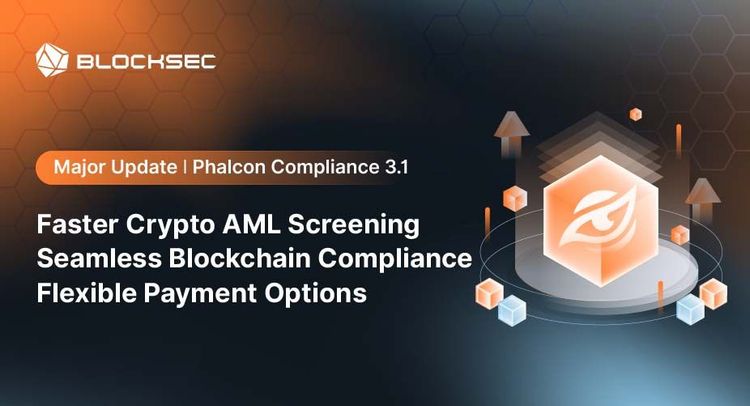In the rapidly evolving world of decentralized finance (DeFi), ensuring the security of protocols is paramount. Hackers are constantly on the lookout for vulnerabilities, making it crucial to safeguard against these threats to maintain trust and operational integrity.
This article examines what are the security risks faced by DeFi protocols and how to ensure protocol security. We will focus on mitigating risks to ensure robust DeFi protocol security, covering aspects such as code vulnerabilities, operational threats, and external dependencies.
Code Security Risks
Code security risks refer to potential vulnerabilities embedded within the code. In DeFi projects, smart contracts form the backbone of their business logic. These smart contracts are crucial as they encapsulate the core functionalities of DeFi protocols. If not properly secured, these smart contracts can be exploited by hackers, leading to drained funds, manipulated transactions, or disrupted protocols.
Development Phase Risks
Risk: One of the primary risks during the development phase is the improper implementation of smart contract logic, which can lead to vulnerabilities such as reentrancy attacks. Additionally, developing custom implementations for common functionalities can introduce unknown vulnerabilities.
Solution: Developers must adhere to industry-recognized smart contract security practices. For instance, following the Checks-Effects-Interactions pattern is essential to prevent reentrancy attacks, a common vulnerability in DeFi protocols. This pattern ensures that any changes to the contract's state are made before external calls, thus minimizing the risk.
Furthermore, for common functionalities, it is advisable to use reliable third-party libraries instead of creating custom implementations from scratch. This approach mitigates the risks associated with reinventing the wheel and introducing unforeseen vulnerabilities.
Internal Testing Phase Risks
Risk: Internal testing can reveal many issues, but for DeFi projects, local testing alone is often insufficient. Due to the complexity and interconnectedness of DeFi protocols, potential issues that threaten protocol security might not emerge until the code is tested in an environment closely mirroring the live deployment.
Solution: Beyond local testing, it is essential to conduct tests in environments that closely mimic actual blockchain network environments. This level of testing helps uncover issues that might only arise under specific conditions that are difficult to replicate in a purely local setup. Comprehensive internal testing is crucial for identifying and addressing potential vulnerabilities before the code goes live.
Post-Testing Phase Risks
Risk: Even after thorough internal testing, undiscovered vulnerabilities can still exist. The developer's perspective might miss common security issues due to familiarity or oversight. Additionally, protocol upgrades that are not audited can introduce new vulnerabilities.
Solution: Engaging reputable third-party audit services is crucial. Although audits cannot guarantee 100% problem-free code, systematic auditing significantly helps identify common security issues that developers might overlook. These auditors bring a fresh perspective and expertise that internal teams might lack. Given the varying expertise and focus areas of different auditing firms, involving two or more auditing companies is advisable if the budget allows. This multi-audit approach increases the likelihood of uncovering potential vulnerabilities that might have been missed by a single auditor. Regular audits, especially after significant protocol upgrades, are recommended to ensure new changes do not introduce fresh vulnerabilities.
By systematically addressing these risks during the development, internal testing, and post-testing phases, DeFi projects can significantly enhance their code security, reducing the risk of exploits and ensuring a more robust protocol.
Operational Security Risks
Once a project is live, it faces operational security risks that can arise during its ongoing operations. Even with thorough development, testing, and auditing, the code may harbor undiscovered vulnerabilities that affect protocol security. This is a well-documented issue in software development, where unknown security flaws can persist even after extensive scrutiny. Additionally, beyond code-related issues, post-launch challenges such as private key leaks or incorrect configuration of critical system parameters can have severe consequences and lead to significant losses.
Private Key Compromise
Risk: Private key leaks can result in unauthorized access and control over the DeFi protocol, leading to theft of funds and other malicious activities. If an attacker gains access to a private key, they can execute transactions, drain funds, or manipulate the protocol to their advantage.
Solution: Use reliable private key management methods to ensure that private keys are stored and handled securely. This includes:
- Secure Hardware Wallets: Hardware wallets provide an offline, secure environment for storing private keys, making it difficult for attackers to access them remotely.
- MPC-based Wallet Solutions: MPC divides the private key into multiple parts held by different parties, ensuring that no single entity has full control. Transactions are only authorized when a predefined number of parties agree, providing an additional layer of security.
Privileged Operations Exploitation:
Risk: Hackers can exploit privileged operations and other vulnerabilities, leading to significant security breaches and potential loss of funds. Privileged operations, such as administrative functions and smart contract management, are attractive targets for attackers because they have the potential to cause widespread damage.
Solution: Implement robust security measures to monitor and protect privileged operations:
Real-Time Monitoring: Continuously track the system's security status and detect any unusual or unauthorized privileged operations. This allows for swift identification of potential threats.
Automated Response Mechanisms: Develop automated systems to respond to detected threats efficiently. Automated responses ensure that threats are addressed promptly, reducing the window of opportunity for attackers. For example, use tools like BlockSec Phalcon, which can automatically block attacks and prevent further damage when security threats are detected. This proactive approach addresses the critical time gap often present in traditional monitoring systems between threat detection and response.
Upon detecting a potential threat, Phalcon can undertake direct actions such as pausing transaction pools or preemptively transferring assets to safe accounts designated by the user. These immediate defensive measures effectively reduce potential losses to zero, providing a robust layer of preemptive security that prevents financial damage before it can occur. Throughout its two years of operation within internal systems, Phalcon has successfully intercepted more than 20 attacks, preserving digital assets worth in excess of $15 million.
The attack monitoring and blocking platform Phalcon is now fully accessible to users. Try it for free through the Phalcon Virtual Experience Journey.
Single Point of Failure in Privileged Operations:
Risk: Relying on a single point of control for privileged operations can lead to catastrophic failures if that point is compromised. An attacker who gains control over a single privileged account can manipulate the entire protocol.
Solution: Distribute the control of privileged operations to minimize the risk of a single point of failure:
- Multi-Signature Wallets: Use multi-signature wallets, such as Safe, to execute privileged operations. Multi-signature wallets require multiple parties to approve a transaction, distributing the risk and ensuring that no single entity can act unilaterally.
- Decentralized Governance: Implement decentralized governance mechanisms where key decisions and privileged operations require consensus from a broad group of stakeholders. This approach not only enhances security but also promotes transparency and accountability within the protocol.
By systematically addressing these operational security risks, DeFi projects can enhance their overall security posture and reduce the likelihood of significant failures during ongoing operations. Proactive management of private keys, vigilant monitoring of privileged operations, and decentralization of control can help ensure the robustness and reliability of the DeFi protocol.
External Dependency Risks
Projects often rely on external dependencies, such as oracles provided by other DeFi protocols. If these dependencies fail, they can lead to incorrect data and significant operational issues. For example, if a price oracle provides erroneous data, it can result in incorrect price calculations, affecting the entire protocol. External dependencies can also include third-party APIs, cloud services, and other integrated technologies that, if compromised, can introduce vulnerabilities into the system.
To mitigate these external dependency risks, the following strategies are recommended:
Selection of Reliable Partners
Dependence on unreliable external partners can lead to incorrect data and operational failures.
Solution: Choose reliable external partners, such as industry-recognized and reputable protocols, to ensure the integrity and reliability of the data and services they provide. Conduct thorough due diligence and continuous evaluations of these partners to ensure they maintain high standards of security and reliability.
Monitoring the Status of Dependencies
Failures or malfunctions in external dependencies can go unnoticed if not properly monitored, leading to significant disruptions.
Solution: Implement monitoring systems to continuously track the status and performance of external dependencies. This includes setting up alerts for anomalies and performance degradation. Regularly audit and test these dependencies to ensure they are functioning as expected and that any changes in their performance are promptly addressed.
Automated Response Mechanisms
Delays in responding to issues with external dependencies can exacerbate the problem and lead to greater losses.
Solution: Develop automated response mechanisms to handle issues with external dependencies efficiently. For instance, implementing fallback mechanisms that switch to backup dependencies rather than pausing the entire protocol can help maintain continuous operation. Ensure that these backup systems are regularly tested and updated to ensure they are ready to take over when needed.
Redundancy and Diversification
Over-reliance on a single external partner or system can lead to a single point of failure.
Solution: Diversify the external dependencies by using multiple providers for critical services, such as oracles. This approach not only provides redundancy but also increases resilience against localized failures. For instance, using multiple price oracles and aggregating their data can help ensure more accurate and reliable price feeds.
By systematically addressing these external dependency risks, DeFi projects can enhance their overall security posture and reduce the likelihood of significant disruptions due to external failures. Proactive management of external dependencies through reliable partnerships, continuous monitoring, automated responses, and redundancy can help ensure the robustness and reliability of the DeFi protocol.
Conclusion
Ensuring the security of DeFi projects involves addressing multiple facets of potential risks. By understanding and mitigating code security risks, operational security risks, and external dependency risks, projects can build a robust defense against hacker attacks. Key strategies include:
- Code Security Risks: Adhering to best practices in smart contract development, conducting thorough testing in near-production environments, and engaging reputable third-party auditors.
- Operational Security Risks: Implementing robust private key management, real-time monitoring, automated response mechanisms, and avoiding single-point failures in privileged operations.
- External Dependency Risks: Selecting reliable partners, monitoring external dependencies, and developing automated response mechanisms to handle issues with these dependencies.
By following these strategies and continuously improving security measures, DeFi projects can better safeguard their protocols, protect user assets, and maintain trust within the ecosystem. The dynamic and fast-paced nature of the DeFi space necessitates a proactive approach to security, ensuring that projects are always one step ahead of potential threats.
In conclusion, building a secure DeFi protocol is an ongoing process that requires vigilance, expertise, and the right tools. By addressing the various types of risks and implementing comprehensive security measures, projects can create a safer environment for their users and contribute to the overall stability and growth of the DeFi ecosystem.




